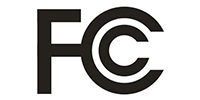Project Description

FCC introduction
The FCC (Federal Communications Commission) was established by COMMUNICATIONACT in 1934 as an independent agency of the US government and directly responsible to Congress.
The FCC coordinates domestic and international communications by controlling radio, television, telecommunications, satellite and cable. The FCC’s Office of Engineering and Technology is responsible for the technical support of the committee and is responsible for the equipment in more than 50 states, Colombia, and the United States. To ensure the safety of radio and wire communication products related to life and property. Accreditation matters. Many radio applications, communications products and digital products require the FCC’s approval to enter the US market.
Federal Communications Commission (FCC)—Manages the import and use of radio frequency devices, including computers, fax machines, electronic devices, radio receiving and transmitting equipment, radio remote control toys, telephones, personal computers, and other products that may harm personal safety. These products, if they are intended to be exported to the United States, must be tested and approved by a government-authorized laboratory in accordance with FCC technical standards. Importers and customs agents are required to declare that each radio frequency device complies with the FCC standard, the FCC license.
Approval Method:
1. FCC VERRIFICATION Self-certification: For products including: AV products, corded phones, ordinary household appliances, etc., and for digital devices other than PC and PC connect devices.
Approval method: The manufacturer or importer ensures that the product has undergone the necessary testing to confirm that the product complies with the relevant technical standards and retains the test report. The FCC has the right to request the manufacturer to submit test data for the equipment sample or product.
2. FCC DOC Self-declaration: Mainly for products including IT products, especially for PC and PC interface devices.
Certification method: For the above range of products, the manufacturer must be registered by the FCC and obtained the test room authorized by A2LA (American Laboratory Accreditation Association) or NVLAP (National Laboratory Accreditation System). After the product has passed the test to obtain the DOC and test report, the FCC logo can be placed on the product to sell to the US market.
3. FCC CERTIFICATION certificate: For products including: R&TTE products, PC and PC connect interface devices.
Certification method: The product needs to be tested by the FCC-approved test room. After obtaining the test report, the technical data of the product is compiled, including: product details photos, block diagrams, user manuals, etc., and sent to the FCC TCB test room together with the test report. The FCC TCB test room confirms that all data is correct and issues a certificate.
For customers who apply for FCC CERTIFICATION for the first time, they must first apply to the FCC for a number – GRANTEE CODE. After the product has passed the test and certification, the FCC ID number is marked on the product and can be sold to the US market. Review the sample (or photo) and test data submitted by the applicant and authorize the device with an FCC ID number if it meets the requirements of the FCC rules.
Technical requirement
1. The full name and detailed contact communication address of the manufacturer and applicant for the certified product.
2. A copy of the installation and use manual for the certified product to be provided to the user. (If the product does not have a user manual, a copy of the relevant content can be provided)
3. Product electrical schematic and working principle description. (If the product has grounding or antenna, it should be described)
4. For the operating oscillation frequency table of the product, the propagation path of the signal and the corresponding oscillation frequency should be listed in the table.
5. Other product features that need to be explained
6. Provide at least one qualified prototype for each certified model. (Recommended two or more)
